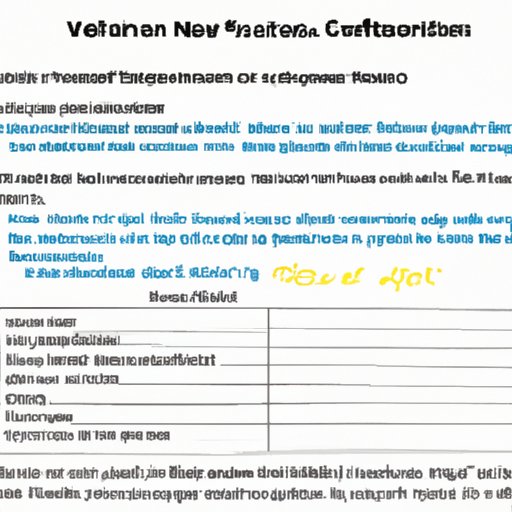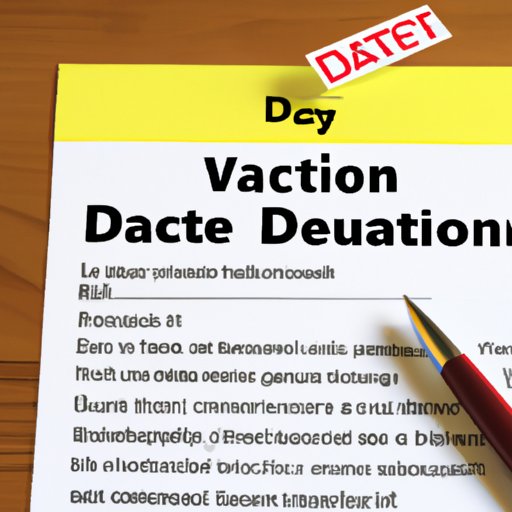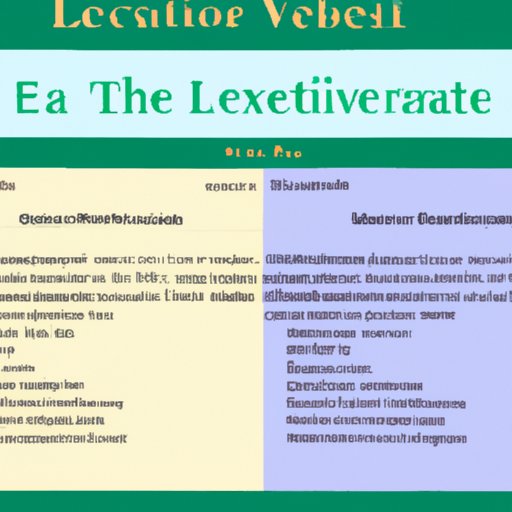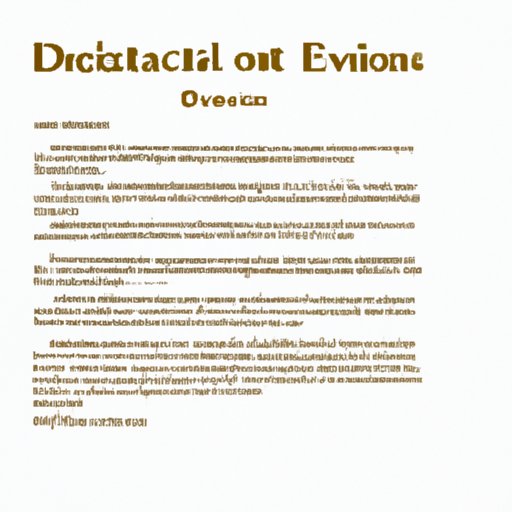Introduction
A 30-day notice to vacate letter is an official document that is sent by a tenant to their landlord when they are planning to move out of the rental property within the next 30 days. It is important to note that this type of letter should not be used if a tenant is planning to break their lease early; in those cases, other methods must be used to end the tenancy agreement. The purpose of a 30-day notice to vacate letter is to provide the landlord with a written notification of the tenant’s intention to move out. This gives the landlord time to find another tenant and to make any necessary arrangements for the transition.

How to Compose a 30 Day Notice to Vacate Letter
Writing a 30-day notice to vacate letter can be a complex process, but it is important to follow the correct steps in order to ensure that the eviction process goes as smoothly as possible. Here is a step-by-step guide to help you compose your letter:
- Step 1: Gather Necessary Information – You will need to gather all of the relevant information about your tenancy agreement, such as the date that you moved in, the amount of rent that you pay each month, and the address of the rental property.
- Step 2: Create the Letter – Create the letter using a formal business letter format, including the date, the recipient’s name and address, and a salutation.
- Step 3: Include Necessary Information – In the body of the letter, include all of the relevant information about your tenancy agreement, including the date that you moved in, the amount of rent that you pay each month, and the address of the rental property.
- Step 4: Notify the Landlord of Your Intention to Move Out – State clearly that you intend to move out of the rental property within the next 30 days and provide the date that you plan to do so.
- Step 5: Provide a Forwarding Address – Provide the landlord with a forwarding address so that they can send any remaining documents or payments to you after you move out.
- Step 6: Sign and Date the Letter – Sign and date the letter at the bottom.
- Step 7: Send the Letter – Send the letter via certified mail or hand-deliver it to the landlord. Keep a copy of the letter for your own records.
When writing a 30-day notice to vacate letter, there are several tips that can help you create an effective letter. First, be sure to include all of the necessary information in the letter, such as the date that you moved in, the amount of rent that you pay each month, and the address of the rental property. Second, make sure that you are clear and concise in your language. Finally, make sure that you sign and date the letter before sending it to the landlord.

Legal Ramifications of Writing a 30 Day Notice to Vacate Letter
It is important to understand the potential legal ramifications of writing a 30-day notice to vacate letter. Depending on the state and local laws, tenants may be subject to certain penalties or fees if they fail to give their landlord sufficient notice before moving out. In some cases, the landlord may also be able to sue the tenant for damages resulting from the tenant’s failure to give proper notice.
Therefore, it is important to be aware of the laws in your area before writing a 30-day notice to vacate letter. Make sure that you understand the requirements for giving notice and the potential consequences of failing to do so.

Examples of 30 Day Notice to Vacate Letter Language
In order to help you write a successful 30-day notice to vacate letter, here are a few examples of language that you can use:
- I am writing to inform you that I will be moving out of [Address] on [Date]. I have resided at this address for [Length of Time], and my last day of occupancy will be [Date].
- This letter serves as my official 30-day notice to vacate the premises. I will be moving out of [Address] on [Date], and my last day of occupancy will be [Date].
- I hereby give you 30 days’ notice that I will be terminating my tenancy at [Address]. My last day of occupancy will be [Date].
When writing your 30-day notice to vacate letter, make sure to use clear, concise language that is easy to understand. Additionally, be sure to include all of the relevant information about your tenancy agreement, such as the date that you moved in and the amount of rent that you pay each month.
What to Include in a 30 Day Notice to Vacate Letter
When writing a 30-day notice to vacate letter, it is important to include all of the necessary information. This includes the date that you moved in, the amount of rent that you pay each month, and the address of the rental property. Additionally, it is important to include the date that you plan to move out and a forwarding address for any remaining documents or payments. Finally, make sure to sign and date the letter before sending it off to the landlord.
Conclusion
Writing a 30-day notice to vacate letter can be a complex process, but it is important to follow the correct steps in order to ensure that the eviction process goes as smoothly as possible. Make sure to include all of the necessary information in the letter, such as the date that you moved in, the amount of rent that you pay each month, and the address of the rental property. Additionally, be sure to include the date that you plan to move out and a forwarding address for any remaining documents or payments. Finally, make sure to sign and date the letter before sending it off to the landlord.
(Note: Is this article not meeting your expectations? Do you have knowledge or insights to share? Unlock new opportunities and expand your reach by joining our authors team. Click Registration to join us and share your expertise with our readers.)
